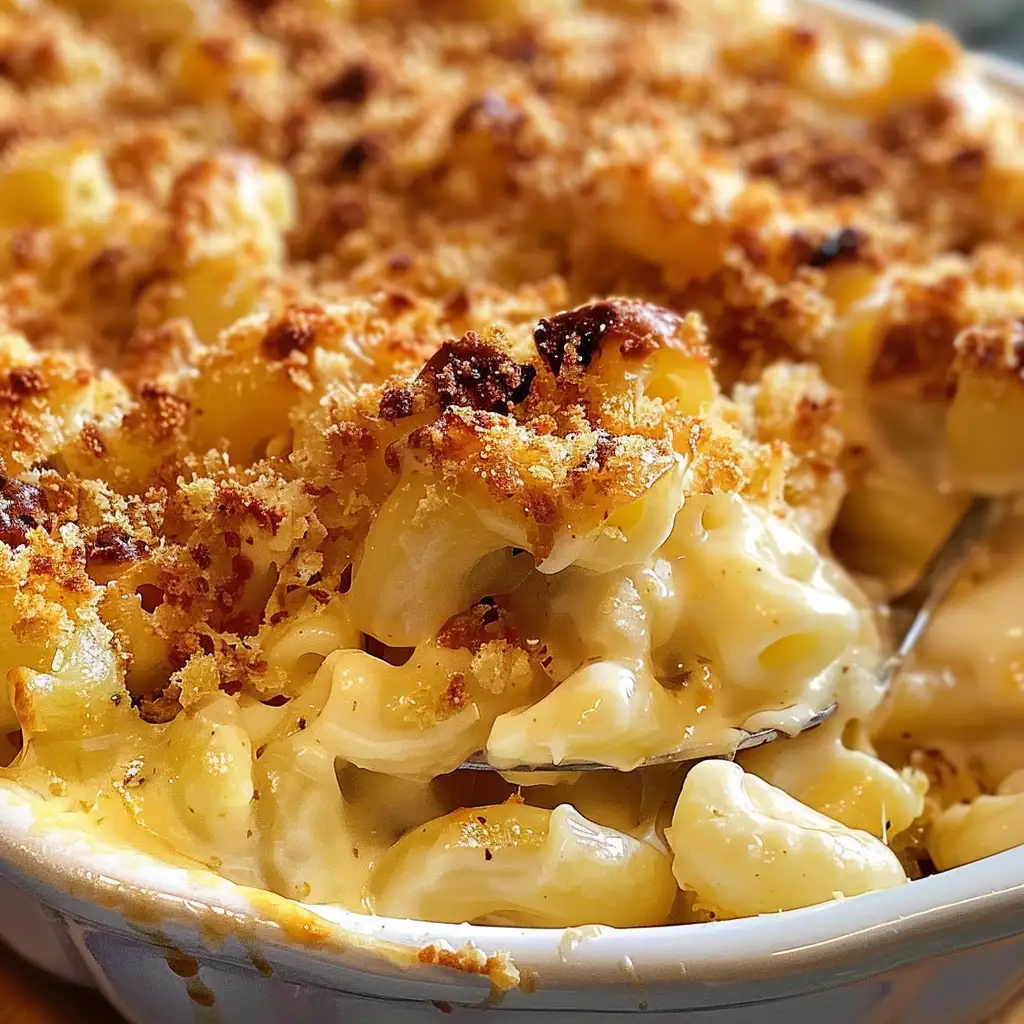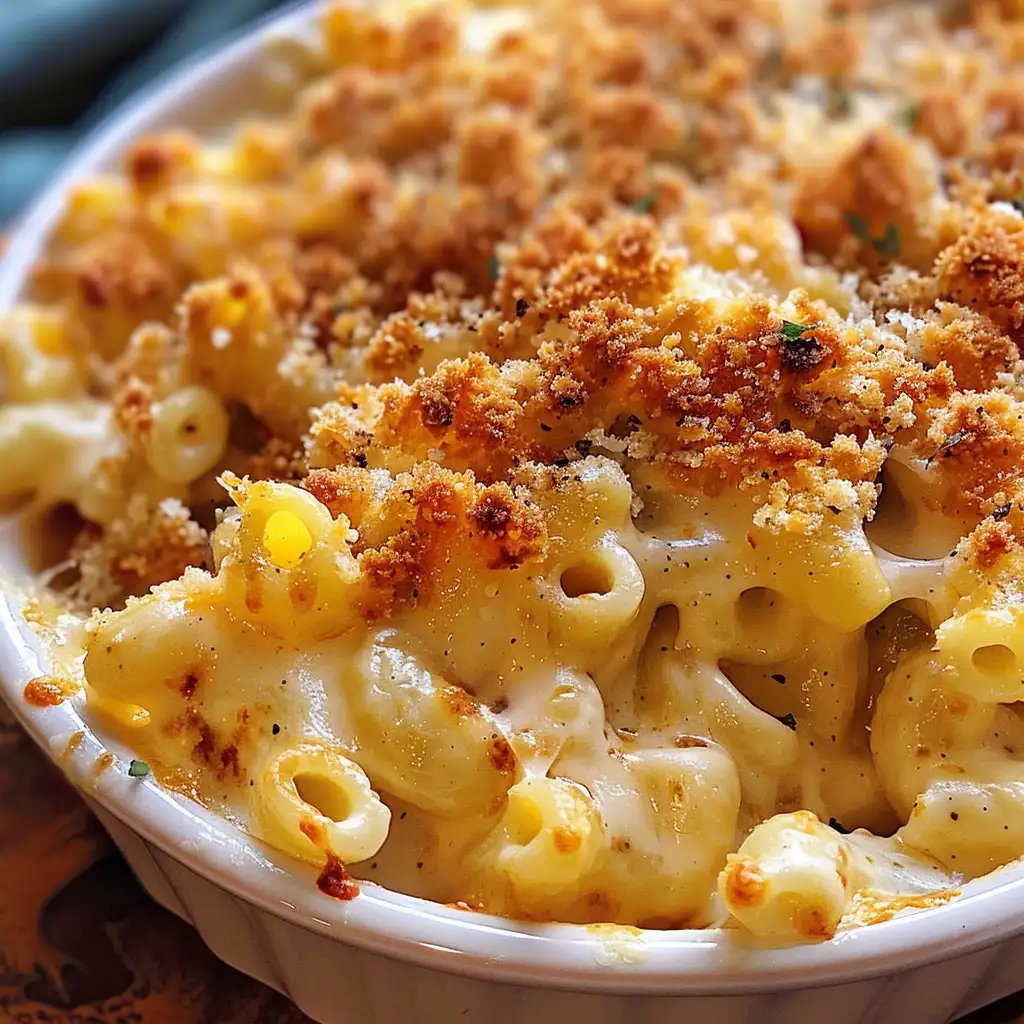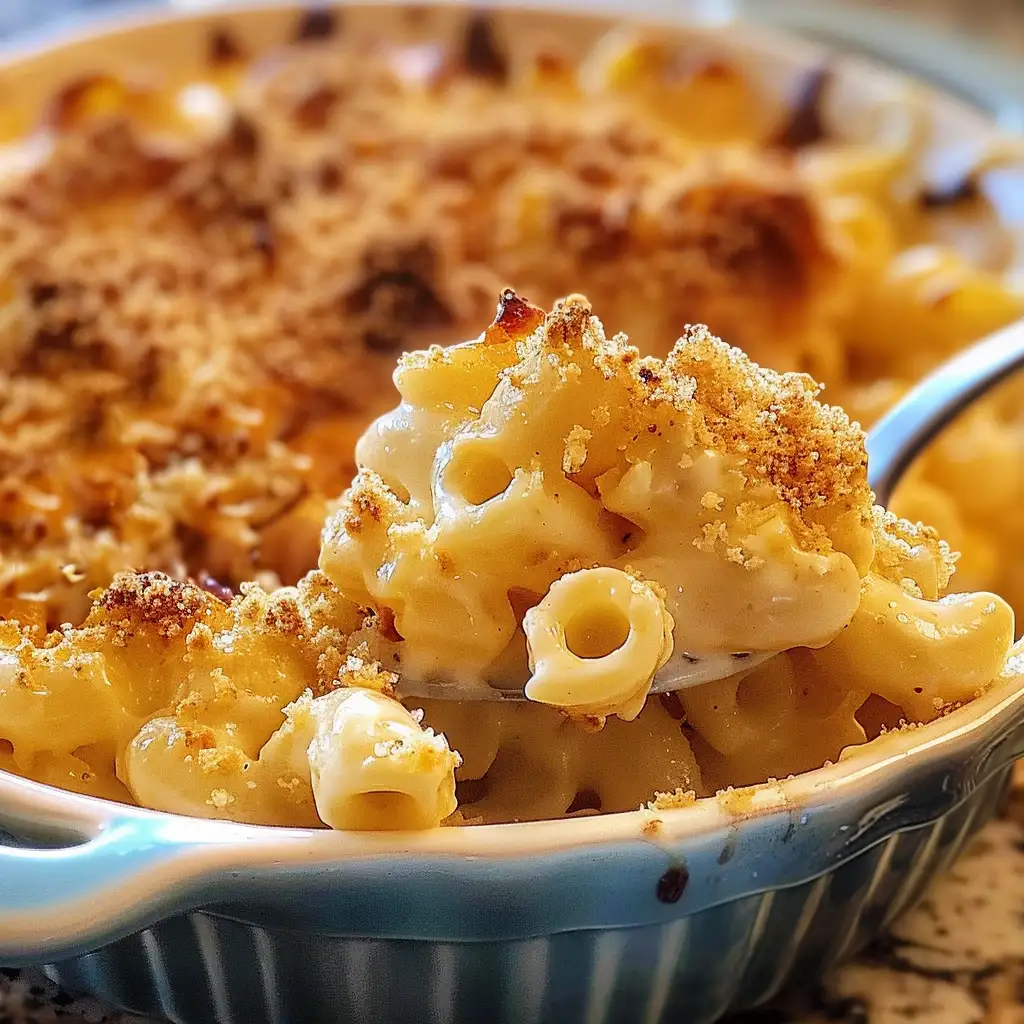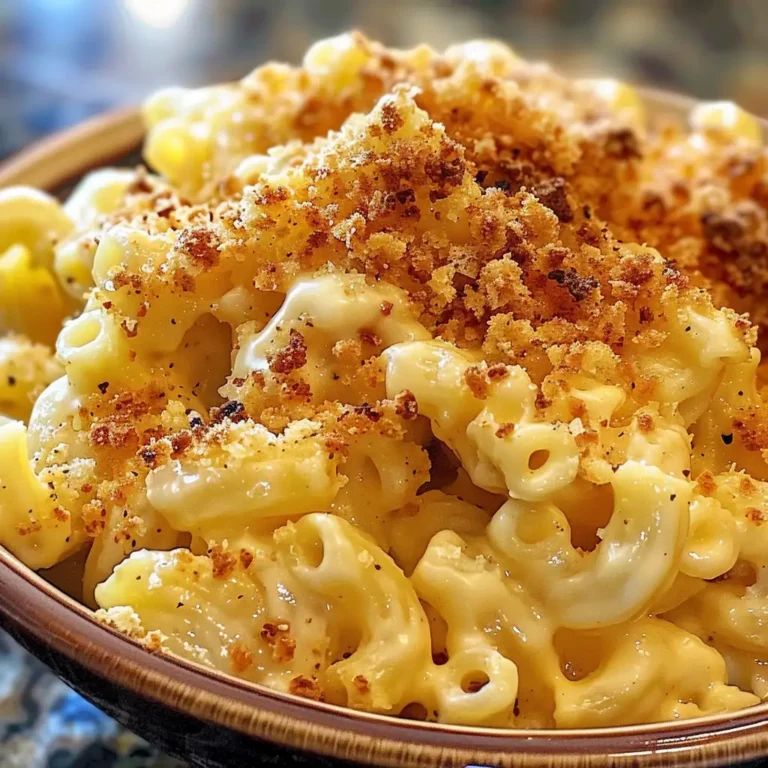Introduction to Homemade Mac and Cheese
Homemade Mac and Cheese is more than just a dish; it’s a comfort food staple with deep roots in American cuisine. Known for its creamy texture and savory flavor, mac and cheese has evolved from a simple cheese casserole of the 19th century into a beloved household favorite. Across the United States, it has been customized in countless ways, making it a versatile dish for all occasions, from family dinners to festive gatherings.
Brief History and Evolution in American Cuisine
Mac and Cheese was popularized in the US by Thomas Jefferson, who, after encountering the dish in Paris, served a fashionable baked version at a state dinner in 1802. Its recipe was simplified over time, incorporating readily available ingredients like cheddar cheese and elbow macaroni, which helped its spread across the nation, becoming a comfort food icon.
Essential Ingredients for Mac and Cheese
For a stellar batch of Mac and Cheese, selecting the right ingredients is key to achieving that perfect blend of flavor and creaminess:
- Types of Pasta: Elbow macaroni is the classic choice; however, shells, penne, or rigatoni also work well as they hold cheese effectively.
- Best Cheeses: A combination of cheeses, such as sharp cheddar for depth and mozzarella for creaminess, is ideal. Adding a touch of Parmesan can enhance the flavor profile.
- Making the Roux: The roux, a mixture of flour and fat (usually butter), is crucial for thickening the cheese sauce. The choice of milk also affects the texture; whole milk will make the sauce creamier, whereas 2% milk is a lighter option.
Discover healthy dairy substitutes for cooking creamy dishes at Healthline.
Basic Recipe Overview
Creating the perfect Mac and Cheese involves simple steps that lead to a rich and luscious dish:
- Cooking the Pasta:
- Boil the pasta in salted water until it is just al dente; overcooking can lead to mushy mac and cheese.
- Drain well and return to the pot.
- Creating the Cheese Sauce:
- Start with a roux by melting butter over medium heat, then sprinkle in an equal amount of flour and stir until the raw flavor is cooked out.
- Gradually whisk in milk until the mixture is smooth and thick.
- Remove from heat and blend in the shredded cheeses until melted and smooth.
- Combining the Elements:
- Mix the cooked pasta into the cheese sauce, ensuring each piece is evenly coated.
- Pour into a baking dish, top with extra cheese, and bake until bubbly and golden on top.
Learn the perfect pasta cooking techniques on Epicurious.
The simplicity of Mac and Cheese makes it not only a quick dinner option but also a customizable canvas for flavors ranging from the traditional to the innovative. Whether baked to crispy perfection or stovetop-cooked for speed, it remains a heartwarming dish that brings smiles with every spoonful.

Advanced Techniques and Variations
Customizing Your Dish
Mac and Cheese can be customized in various ways to enhance its flavor or adapt it to dietary preferences:
- Altering the Cheese Blend:
- For a deeper flavor, mix smoked cheeses such as Gouda or Provolone with traditional cheddar.
- Sharp cheddar intensifies the overall flavor, providing a more pronounced cheese experience.
- Experimenting with combinations like Mozzarella and Monterey Jack can add layers of texture and taste.
- Enhancing with Mix-ins:
- Crisp bacon, pan-fried until crunchy and broken into pieces, adds a savory depth.
- Breadcrumbs or crushed Ritz crackers sprinkled on top introduce a pleasing crunch that contrasts the creamy pasta.
- Spices such as smoked paprika, mustard powder, or cayenne can be added to the roux for an extra kick.
- Vegan and Gluten-Free Alternatives:
- Substitute regular pasta with gluten-free options like rice pasta or quinoa pasta.
- Use nutritional yeast or vegan cheese substitutes for a dairy-free version.
- Vegan cream or unsweetened almond milk can replace traditional milk, and gluten-free flour can be used for the roux.
Learn healthy vegan substitutions for traditional ingredients.
Cooking Methods Compared
The method of cooking Mac and Cheese can significantly affect its texture and flavor:
- Stovetop Versus Baked:
- Stovetop mac and cheese is quicker and often creamier, ideal for a smooth and velvety sauce.
- Baked mac and cheese benefits from the crispy, golden top layer that baking achieves, which many find irresistible.
- Achieving a Crispy Topping:
- Toppings like Panko breadcrumbs or crushed crackers mixed with melted butter provide a crunchy texture.
- Sprinkling grated Parmesan over the topping before baking adds a rich flavor and aids in forming a crispier crust.
- Impact of Baking Time and Temperature:
- Baking at a high temperature (around 375°F to 400°F) for a shorter period (20-25 minutes) creates a deliciously browned top without overcooking the creamy base.
- A lower temperature for a longer time allows the dish to heat through while maintaining moisture, preventing it from drying out.
Explore various macaroni and cheese recipes on Food Network for inspiration on both stovetop and baked versions.
Serving and Pairing Suggestions
What to Serve with Mac and Cheese
Choosing the right side dishes and pairings can transform Mac and Cheese from a simple comfort food to a culinary delight:
- Ideal Side Dishes:
- Green salads, dressed lightly with a vinaigrette, add a crisp freshness that complements the rich, creamy pasta.
- Roasted vegetables like broccoli, brussels sprouts, or carrots provide a healthy and flavorful balance.
- Complementary Main Dishes:
- BBQ meats, such as pulled pork or brisket, go well with the cheesy goodness of mac and cheese.
- Fried chicken, crispy and juicy, is a classic pairing that never fails to please.
- Beverage Pairings:
- Light wines such as a Chardonnay or a young Riesling can cut through the richness of the cheese.
- For beer lovers, a crisp Pilsner or a malty Amber Ale complements the dish beautifully.
Choosing the right components to accompany Mac and Cheese not only enhances the eating experience but also balances the meal, making it satisfying but not overly heavy. Whether it’s a weeknight dinner, a potluck, or a festive gathering, these suggestions will help ensure your mac and cheese is a hit.

Make-Ahead Tips and Food Safety
Preparing Mac and Cheese in Advance
Mac and Cheese is a great dish for preparing ahead of time, whether for weeknight dinners or large gatherings. Here’s how to ensure it remains creamy and delicious:
- How to Store and Reheat:
- Cool the mac and cheese completely before storing to avoid condensation and sogginess.
- Store in a tightly sealed container in the refrigerator for up to three days.
- Reheat in the oven at 350°F for 20 minutes or in the microwave for best results. Stir occasionally to distribute heat and maintain creaminess.
- Freezing and Thawing Tips:
- Mac and Cheese can be frozen for up to two months. Freeze it in a well-sealed container or airtight freezer bag.
- Thaw overnight in the refrigerator or bake straight from the freezer by increasing the baking time by about 15 minutes.
- Avoid freezing dishes that include ingredients that do not freeze well, such as some cheeses and cream-based sauces.
- Food Safety Considerations:
- Always cool rapidly to reduce the risk of bacterial growth.
- Reheat to an internal temperature of 165°F to ensure food safety.
- Use clean utensils and dishes when serving to prevent cross-contamination.
Detailed guidelines on food storage and safety.
Troubleshooting Common Problems
Solving Textural and Flavor Issues
Adjusting the consistency of the cheese sauce and fixing flavor imbalances are common issues when making Mac and Cheese. Here are some tips to help:
- Adjusting Sauce’s Consistency:
- If the sauce is too thick, gradually whisk in warm milk until the desired consistency is reached.
- If the sauce is too thin, cook over low heat with a bit more roux (butter and flour mixture) or allow it to simmer slightly longer to reduce.
- Dealing with Flavor Imbalances:
- If the dish is too bland, increase the salt slightly, add a pinch of garlic powder or mustard powder for depth, or a sharper cheese like aged cheddar.
- If the dish is overly sharp, balance it with a bit of cream or a milder cheese, such as Monterey Jack or mozzarella.
- Tips for Perfectly Melted Cheese:
- Grate your own cheese as pre-shredded cheese often contains anti-caking agents that can affect melting.
- Remove the sauce from the heat before adding cheese to prevent it from becoming grainy.
- Add cheese gradually and stir constantly to ensure it melts smoothly.
Understanding these tips and adjustments can save a batch of Mac and Cheese that might otherwise seem ruined, and can elevate the flavors to better suit your palate.
Read more about perfecting your cheese sauce.
These make-ahead tips, safety guidelines, and troubleshooting solutions will help ensure your Mac and Cheese is delicious every time, whether it’s made fresh or prepared in advance. This approach not only saves time but also enhances the flavors, making the dish a convenient and enjoyable option for any meal.

FAQs
Frequently Asked Questions
When it comes to making Mac and Cheese, several common questions arise regarding ingredients and preparation methods:
- Can I use pre-shredded cheese?
- While it’s convenient, pre-shredded cheese often contains anti-caking agents that can affect the smoothness of your sauce. For best results, grate your cheese from a block to ensure it melts evenly and smoothly.
- What can I add to mac and cheese for more flavor?
- To enhance the flavor of Mac and Cheese, consider adding:
- Spices such as mustard powder, paprika, or black pepper.
- Fresh herbs like thyme or chives for a touch of green.
- Sautéed onions or garlic for depth, or crispy bacon for a savory note.
- Additionally, experimenting with different cheeses, such as Gruyère or smoked gouda, can add new dimensions of taste.
- To enhance the flavor of Mac and Cheese, consider adding:
- Do I have to use 2% milk?
- No, you can use any type of milk. Whole milk will make your Mac and Cheese creamier, while skim milk will make it lighter. Non-dairy milks (like almond or soy) are also viable substitutes but might alter the flavor slightly.
- Can I double the recipe for larger gatherings?
- Absolutely! Doubling the recipe is straightforward: simply use twice the amount of each ingredient and follow the same preparation steps. Be sure to use a larger pot or baking dish to accommodate the increased volume.
Explore creative ways to enhance your mac and cheese.
Related Recipes and Dishes
Exploring Other Comfort Foods
Mac and Cheese is just the starting point for delicious, comforting pasta dishes. Here are some related recipes and variations to try:
- Recipes for Related Dishes:
- Cheese Lasagna: Layered with ricotta, mozzarella, and parmesan, lasagna is a hearty favorite.
- Creamy Pasta Bakes: Similar to mac and cheese but can include ingredients like chicken, mushrooms, and various cheeses.
- Variations on Mac and Cheese:
- Add vegetables like broccoli, peas, or spinach to mix health into this comfort dish.
- Try different sauces, such as a tomato-based sauce or a creamy Alfredo, to diversify your pasta repertoire.
- Cultural Variations and International Twists:
- Italian Cacio e Pepe: A simple yet elegant dish focusing on pepper and cheese.
- French Gratin de Pâtes: Pasta mixed with béchamel sauce and broiled to a crispy finish.
- Explore these international dishes to bring global flavors into your comfort cooking.
Learn more about international pasta dishes and their origins.
These related recipes not only expand your culinary skills but also add variety to your menu, making every meal with pasta a delightful and comforting experience. Whether you stick to the classic Mac and Cheese or venture into other pasta dishes, the possibilities are endless for creating tasty, satisfying meals.

